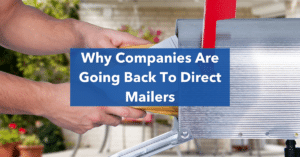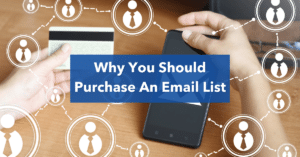
Why Companies Are Going Back To Direct Mailers
Why Companies are Going Back to Direct Mailers For the last few years, email marketing data has been on the rise and at the forefront
Small businesses are always looing for good ways to market their business. The most sophisticated marketing organizations will stress the importance of a good prospect list—it is the key to growing a business. However, what many business owners fail to understand is how to go about building a responsive prospecting list, leaving owners disappointed and confused with the results they are getting from their marketing. There are many ways to build a list—some that lead to a great prospects and some that lead to a list of non-targeted, unresponsive prospects.
First, you need to know what a good list should do for you. It should represent your target audience—prospects who fit your best customer demographics. So you need to be able to segment customers by interest, lifestyle, buying habits, product/service affinity and other metrics.
There are two primary steps to building this list: building your internal list and purchasing/renting lists.
When building your internal list, pull together all of the information you have about your customers. Why? Because they have already purchased from you, which means they are most likely to buy from you again. And, building this list will give you a valuable picture of who your best customers are so you can find prospects that match them.
You need to have systems in place to capture information—if they buy online, you likely have their address and email address. For in-store customers, find a way to collect that information during the sales process. You can do this by creating a loyalty program where they receive deals via email, contests and so on. This will help you build a strong list that can be used to profile new prospects.
You will likely find some of your information is incomplete—like you don’t have their full name or what city they live in. Your data broker can help fill in those blanks. They will take your list and append it against industry databases to gather the missing information you need. As a small business, your mailing list may not be very large but it can be very powerful.
Once you have a good internal list, you can apply your findings towards building a list with similar criteria for renting or purchasing. These lists are a great way to reach new prospects. In addition to the house list you have just built, there are essentially four types of mailing lists:
Targeted demographic lists: This list lets you find any type of person you want to target, searching for things such as age, gender, geographic location, income level, and the number of children in the home. It lets you narrow your search to a very specific profile. These lists are the most common type for a small business to start with because they tend to be the most cost-effective to acquire. Examples include:
Whatever type of list you want to purchase or rent, it is important to use a reputable list company. There are three primary questions to ask that will help you assess whether they are a good company to use:
1. Do you guarantee deliverability? You will never get 100% deliverability, but the industry standard for direct mail is 80%. If they can’t guarantee that, look for a different company.
2. Do you update your lists monthly? The list data is only good if it is current, which means you want a company that updates it at least monthly.
3. Can I use this list more than once? It is common for companies to sell a list for one-time use, so that is not a red flag. But you do need to understand when and how you can use the data. And if, for example, you want to do a 6-piece campaign, you need to be able to send it to the same list six times. Find out if the company you’re dealing with has an unlimited usage option and what the cost is.
"*" indicates required fields

Why Companies are Going Back to Direct Mailers For the last few years, email marketing data has been on the rise and at the forefront

How to Create a Personalized Direct Mail Piece Adding personalized elements to your mail piece increases response rates. Mail recipients prefer to receive mailers that

Using Business Mailing Lists to Drive Leads Finding new business leads can be a tricky process, whether you are relying on yourself, your marketing team,

How to Develop Content that Works “My website is a beast that must be fed,” a real estate broker recently lamented. And the website’s favorite

8 Reasons to Purchase an Email List An accurate email list has the power to jumpstart new businesses or give some much-needed traction to older

Why Rent or Buy an Email List? When it comes to email marketing, you may have heard that renting or buying email lists is always
